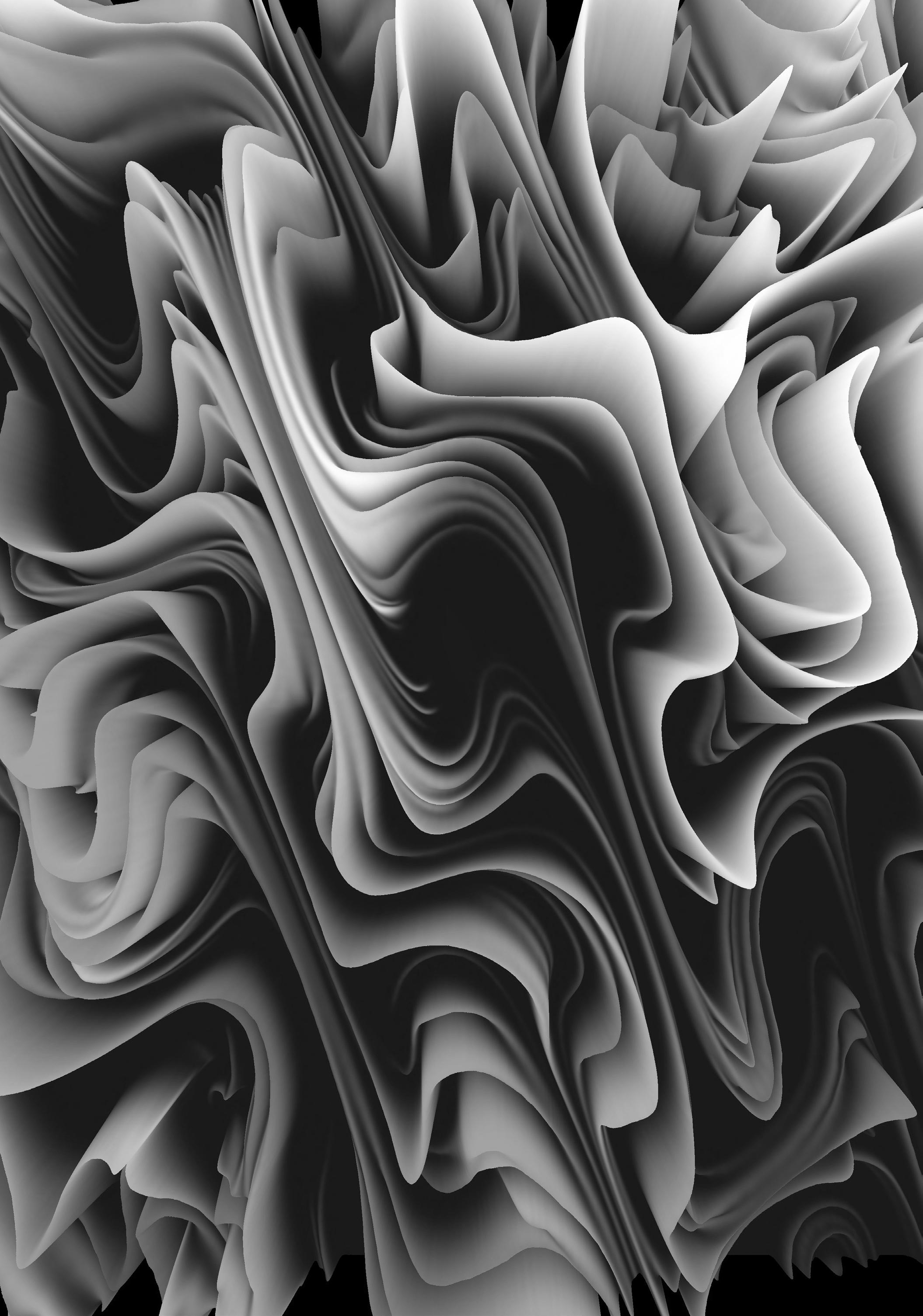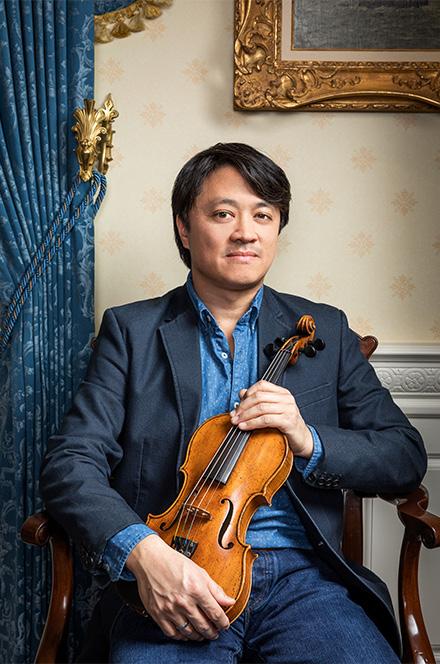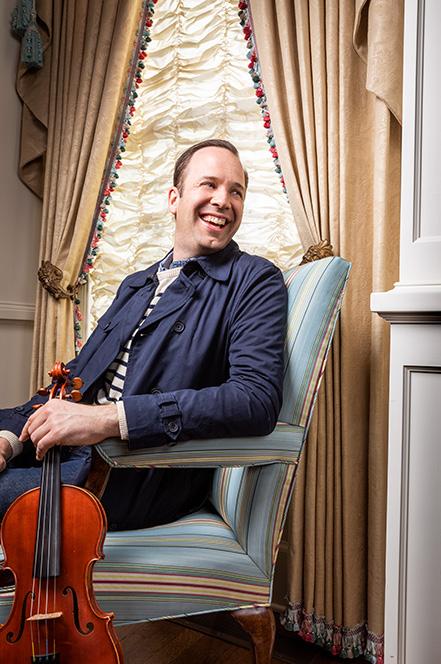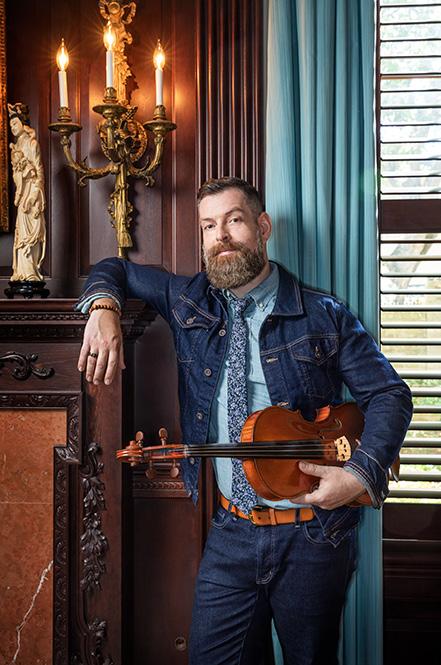MIRÓ QUARTET
The Miró Quartet is one of America’s most celebrated and dedicated string quartets, having been labeled by The New Yorker as “furiously committed” and noted by the Cleveland Plain Dealer for its “exceptional tonal focus and interpretive intensity.” For over twenty-five years the Quartet has performed throughout the world on the most prestigious concert stages, earning accolades from critics and audiences alike.
DANIEL CHING
Daniel Ching, a founding member of the Miró Quartet, began his violin studies at the age of 3 under tutelage of his father. At age 5, he entered the San Francisco Conservatory Preparatory Division on a full twelve-year scholarship, where he studied violin with Serban Rusu and Zaven Melikian, and chamber music with Susan Bates. At the age of 10, Daniel was first introduced to string quartets. A graduate of the Oberlin Conservatory of Music, Daniel studied violin with Kathleen Winkler, Roland and Almita Vamos, and conducting with Robert Spano and Peter Jaffe. He completed his Masters degree at the Cleveland Institute of Music.
WILLIAM FEDKENHEUER
Winner of the Lincoln Center Martin E. Segal Award, violinist William Fedkenheuer has distinguished himself as a versatile artist with international performances as soloist, chamber, and orchestral musician. William’s touring in the United States has included performances at The Chamber Music Society of Lincoln Center, Carnegie Hall Presents, San Francisco Performances, and the National Gallery. Abroad, he has performed at the American Academy in Rome, Fountainbleu, Spoleto Festival of Two Worlds, the Taipei National University of the Arts, and in Austria at the famed Esterhazy Castle for the Haydn Festival in Eisenstadt.
JOHN LARGESS
Violist John Largess began his studies in Boston at age 12 in the public schools, studying with Michael Zaretsky of the Boston Symphony, and later as a student of Michael Tree at the Curtis Institute of Music in Philadelphia. In 1995, he graduated from Yale University to join the Colorado String Quartet as interim violist with whom he toured the United States and Canada teaching and concertizing. The following year he was appointed principal violist of the Charleston Symphony Orchestra in South Carolina, a position he held until joining the Miró Quartet in 1997.
DANIEL CHING
Cellist Joshua Gindele, a founding member of the Miró Quartet, began his cello studies at the age of 3 playing a viola his teacher had fitted with an endpin. As cellist for the Miró, Joshua has won numerous international awards including an Avery Fisher Career Grant, the Naumburg Chamber Music Award and the Cleveland Quartet Award and has shared the stage with Pinchas Zuckerman, Joshua Bell, Midori, Matt Haimovitz, Eliot Fisk, Leif Ove Andnes, and The Oak Ridge Boys. He continues to perform across four continents and on some of the world’s most prestigious concert stages.
Notes on the Program by Dr. Richard E. Rodda
String Quartet in G major, Op. 18, No. 2
Ludwig van Beethoven
Born December 16, 1770 in Bonn.
Died March 26, 1827 in Vienna.
Composed in 1799.
Premiered in 1800 in Vienna.
The year of the completion of the six Op. 18 Quartets 1800 was an important time in Beethoven’s development. He had achieved a success good enough to write to his old friend Franz Wegeler in Bonn, “My compositions bring me in a good deal, and may I say that I am offered more commissions than it is possible for me to carry out. Moreover, for every composition I can count on six or seven publishers and even more, if I want them. People no longer come to an arrangement with me. I state my price, and they pay.” At the time of this gratifying recognition of his talents, however, the first signs of his fateful deafness appeared, and he began the titanic struggle that became one of the gravitational poles of his life. Within two years, driven from the social contact on which he had flourished by the fear of discovery of his malady, he penned the Heiligenstadt Testament, his cri de coeur against this wicked trick of the gods. These first Quartets stand on the brink of this great crisis in Beethoven’s life.
The G major Quartet, the second of the Op. 18 set, is Beethoven’s wittiest specimen of the genre, and, because of its frequently featherstitched texture, is regarded by many players to be one of his most difficult to perform. The opening Allegro , much indebted to Haydn in its conversational intimacy, drew from Theodore Helm, Beethoven’s 19th- century biographer, the following fanciful description: “The principal subject brings before one’s imagination a brilliant scene in some 18th- century salon, with all the ceremonious display and flourish typical of the period. The doors of the drawing- room swing open to usher in the arriving guests, met with bows and gracious words of greeting.” The second movement is a remarkably daring composition. It begins with a hymnal theme decorated with filigree by the first violin, but soon comes to a dying close with a tiny melodic fragment composed more of silence than of sound. The first violin posits a quick repetition of the fragment, and suddenly the other instruments join it in a n episode of skittering energy. This aberrant thought, so surprisingly stumbled upon, is quickly dismissed, however, and the hymnal theme returns, as though nothing untoward had happened, and continues without incident to its appointed close. The Scherzo, a witty descendent of those in Haydn’s quartets, is marked by a certain leonine gruffness that came more and more to characterize Beethoven’s works. Aufgeknöpft “ unbuttoned ” is how Beethoven referred to the convivial finale. Helm allowed that by this point in his imaginary soirée “the champagne had been passed around,” and the lighthearted gaiety and quick changes of subject that bubble through the movement do certainly evoke the high spirits and good- natured banter of a gathering of congenial friends.
Rendezvous with Benny for Clarinet and String Quartet
Alan Shulman
Born June 4, 1915 in Baltimore.
Died July 10, 2002 in Hudson, New York.
Composed in 1946.
Premiered in August 1946 over New York radio station WEAF by clarinetist Benny Goodman and the Stuyvesant Quartet.
Alan Shulman was born in Baltimore to Russian- Jewish immigrants in 1915 and, until his health gave out seven decades later, he filled his life with a staggering quantity and range of musical experiences. Shulman studied cello at the city’s Peabody Conservatory as a youngster, began playing in public (and on then- novel radio) at age ten, started composing soon thereafter, and joined the National Orchestral Association (the country’s preeminent youth orchestra) and won a scholarship from the New York Philharmonic after the family moved to Brooklyn when he was fourteen. He joined the musicians’ union at age sixteen, attended Juilliard for five years to study cello and composition, played in the orchestra of the original Broadway production of Cole Porter’s Anything Goes in 1934, performed with various classical chamber ensembles and in light music on NBC Radio, composed, arranged, and in 1937, with his violinist brother Sylvan, became a founding member of the NBC Symphony Orchestra, created for renowned conductor Arturo Toscanini. In 1938, Alan and Sylvan together established the Stuyvesant String Quartet, which excelled in performing and recording contemporary works, as well as the New Friends of Rhythm, a “symphonic jazz group” that made several successful recordings. Alan served in the Merchant Marine service during World War II but he was able to continue his musical activities in his free time, and premiered new compositions over ABC Radio (performed by Sylvan) and at Carnegie Hall in 1944. After the war, Shulman married (a pianist he had met at Juilliard), rejoined the NBC Symphony, arranged cross- over albums for soprano Risë Stevens and bandleader Skitch Henderson, wrote popular songs with entertainer Steve Allen, became a member of the American Society of Composers, Authors and Publishers, participated in a 1959 Soviet - American composers’ symposium on NBC with Americans Roy Harris and Howard Hanson and Russians Dmitri Shostakovich and Dmitry Kabalevsky, and helped found the Violoncello Society. Shulman also performed continuously in chamber ensembles and on recordings, radio and television, taught at Juilliard, Sarah Lawrence College, State University of New York at Purchase, Johnson State College, and University of Maine, and composed steadily. He retired in 1987 due to declining health, and died five years later in Hudson, New York, a hundred miles upriver from Manhattan.
In August 1946, during the years after World War II when he was one of America’s most popular musicians, clarinetist Benny Goodman invited Shulman and his Stuyvesant String Quartet to join him in performing a movement from Mozart’s Clarinet Quintet on his weekly radio show over New York station WEAF. Goodman had established his classical credentials by that time by commissioning and premiering Contrasts by Béla Bartók in 1938 (he went on to premiere works by Malcolm Arnold, Morton Gould, Francis Poulenc, Aaron Copland and Leonard Bernstein), but Shulman proposed instead that he write a short piece for clarinet and string quartet that would feature both Goodman’s classical and jazz abilities. Shulman called it Rendezvous with Benny .
Homage to Benny for Clarinet and String Quartet
Arranged by David Schiff
Born August 30, 1945 in Bronx, New York.
Composed in 2022.
Premiered April 3, 2022 in Portland, Oregon by clarinetist David Shifrin and the Miró Quartet
David Schiff, who retired in 2019 as R.P. Wollenberg Professor of Music after teaching for 38 years at Reed College in Portland, Oregon, was born in New York City in 1945, holds degrees in English literature and music from Columbia University, Cambridge University, Manhattan School of Music and the Juilliard School; his composition teachers include John Corigliano, Ursula Mamlok and Elliott Carter. Among Schiff’s creative output are three musical theater pieces (the two- act opera Gimpel the Fool has a Yiddish libretto by Isaac Bashevis Singer), orchestral scores, concertos for jazz violin, clarinet and timpani, sacred music, and numerous works for varied chamber ensembles, many written on commissions from the Detroit Symphony, Virginia Symphony, Seattle Symphony, Oregon Symphony, Minnesota Orchestra, Manhattan School of Music, Juilliard School, Chamber Music Society of Lincoln Center, and other distinguished organizations. David Schiff’s honors include the ASCAP Deems Taylor
Award, League of Composers- ISCM Award, and grants and commissions from the National Endowment for the Arts, National Endowment for the Humanities, Merrill Foundation and Amphion Foundation, as well as two Vollum Research Grants and the Burlington Northern Award for Excellence in Teaching from Reed College. Schiff is also active as a conductor and music critic, and has written books about the music of Elliott Carter, George Gershwin and Duke Ellington. His articles appear regularly in The Atlantic Monthly , The New York Times , Opera News and Tempo . Recordings of his works have been issued on the Delos, Argo, CRI, Naxos and New World labels.
Schiff wrote of Homage to Benny , arranged in 2022 for clarinetist David Shifrin, “Benny Goodman will always be remembered in terms of the Swing Era, in particular for two events that defined that era: his performance with his band at the Palomar Ballroom in Los Angeles on August 21, 1935, when he thrilled a huge, young audience of dancers with his hottest numbers, many of them arranged by Fletcher Henderson, whose orchestra had perfected the idiom that became known as swing over the previous in decade; and the concert at Carnegie Hall on January 16, 1938, which not only brought big band jazz into the most hallowed venue of classical music for the first time, but also featured Black and white performers on the same stage, a rarity at the time. The Benny Goodman Orchestra was joined on that evening by many of the most distinguished African- American musicians of the time, including Cootie Williams, Harry Carney and Johnny Hodges from the Duke Ellington Orchestra, and Lester Young, Freddie Green and Walter Page from the Count Basie Orchestra (along with Count Basie himself).
Goodman was a pioneer in desegregating jazz, most famously through his performances with a sextet that included Teddy Wilson, Lionel Hampton and Charlie Christian. Goodman also performed and recorded many works from the classical repertory, and premiered new classical compositions by Bartók, Poulenc, Copland and Bernstein. In all these endeavors, Goodman could immediately be identified by the warmly expressive sound of his clarinet, a sound that inspired the young David Shifrin to take up that instrument.”
Clarinet Quintet in A major, K. 581 Wolfgang Amadeus Mozart
Bor n January 27, 1756 in Salzburg. Died December 5, 1791 in Vienna.
Composed in 1789.
Premiered on December 22, 1789 in Vienna, with Anton Stadler as clarinetist and the composer playing viola. Mozart harbored a special fondness for the graceful agility, liquid tone and ensemble amiability of the clarinet from the time he first heard the instrument as a young boy during his tours, and he later wrote for it whenever it was available. His greatest compositions for the instrument were inspired by the technical accomplishment and expressive playing of Anton Stadler, principal clarinetist of the Imperial Court Orchestra in Vienna and fellow Mason, for whom he wrote not only this Quintet, but also the Trio for Piano, Clarinet and Viola (“Kegelstatt,” K. 498), clarinet and basset horn parts in the vocal trios, clarinet solos in the opera La Clemenza di Tito , clarinet parts added to the second version of the G minor Symphony (K. 550), and the flawless Clarinet Concerto (K. 622), his last instrumental work, completed in October 1791, just two months before he died. The last years of Mozart’s life were ones of troubled finances, ill health and family problems that often forced him to beg for loans from others. It says much about his kindness and sensitivity that he, in turn, loaned Stadler money when he could, and even once gave him two gold watches to pawn when there was no cash at hand. The final accounting of Mozart’s estate after his death showed that Stadler owed him some 500 florins several thousand dollars. The clarinet works he gave to his friend are beyond price.
The Quintet opens with a theme that is almost chaste in its purity and yet is, somehow, deeply introspective and immediately touching. As its initial punctuating arpeggios indicate, the clarinet’s role in the piece is not so much one of soloist in a miniature concerto (as is the wind instrument in the Horn Quintet, K. 407) as that of an equal partner to the string ensemble. The second theme, a limpid, sweetly
chromatic melody such as could have been conceived by no other musician of the time, not even Joseph Haydn, is given first by the violin and then by the clarinet above a delicate syncopated string accompaniment. A reference to the suave main theme closes the exposition and serves as the gateway to the development section, which is largely concerned with permutations of the arpeggiated figures with which the clarinet made its entry in the opening measures. The recapitulation provides exquisite closure of the movement’s formal structure and emotional progression. The Larghetto achieves a state of exalted sublimity that makes it the instrumental counterpart to Sarastro’s arias in The Magic Flute , which George Bernard Shaw once said were the only music fit to issue from the mouth of God. The Menuetto is fitted with two trios: the first, a somber minor - mode essay for strings alone, is perfectly balanced by the clarinet’s lilting, Ländler - like strains in the second. The variations- form finale is more subdued and pensive than virtuosic and flamboyant, and serves as a fitting conclusion to one of the most precious treasures in Mozart’s peerless musical legacy.
©2024 Dr. Richard E. Rodda
Great communities create great organizations – not the other way around. In 1979, BIG ARTS was created by, and for, the community, and owes its rich history to a small band of dedicated artists who drew inspiration from each other and from the breathtaking island beauty that infused their work with grace and authenticity. They set out to create a special gathering place where artistic and educational experiences were accessible to all. Today that vision is alive and well. With the help of our loyal donors and supporters, BIG ARTS will carry that vision forward – providing joy, inspiration and a sense of community for generations to come.
Vision
To create great arts, entertainment and learning experiences that always inspire, enrich and delight.
Mission
Provide an array of quality entertainment, arts and education programs that enrich and nurture the lives of Sanibel and Captiva residents and visitors through:
• professionally led arts and enrichment classes and workshops for students of all ages
• stimulating and informative lectures and group discussions with renowned national thought leaders and educators
• dynamic visual and performing arts presentations of the highest caliber






